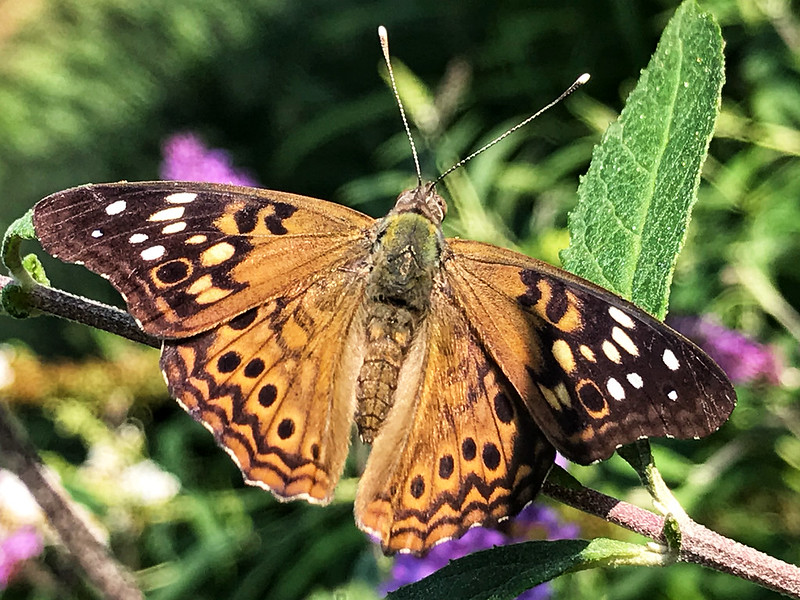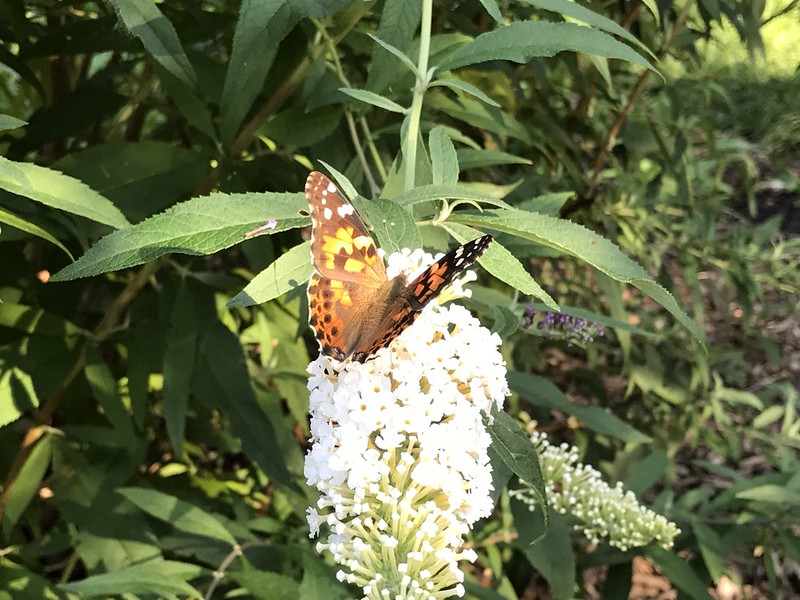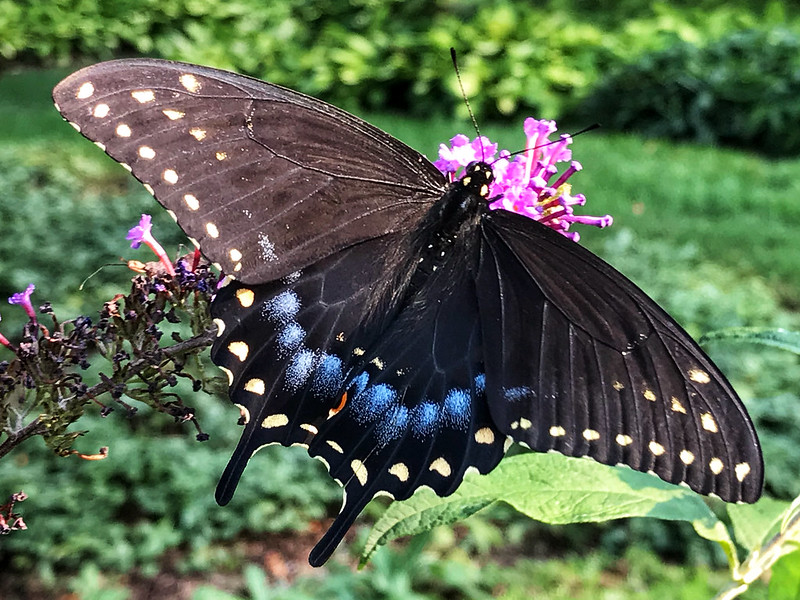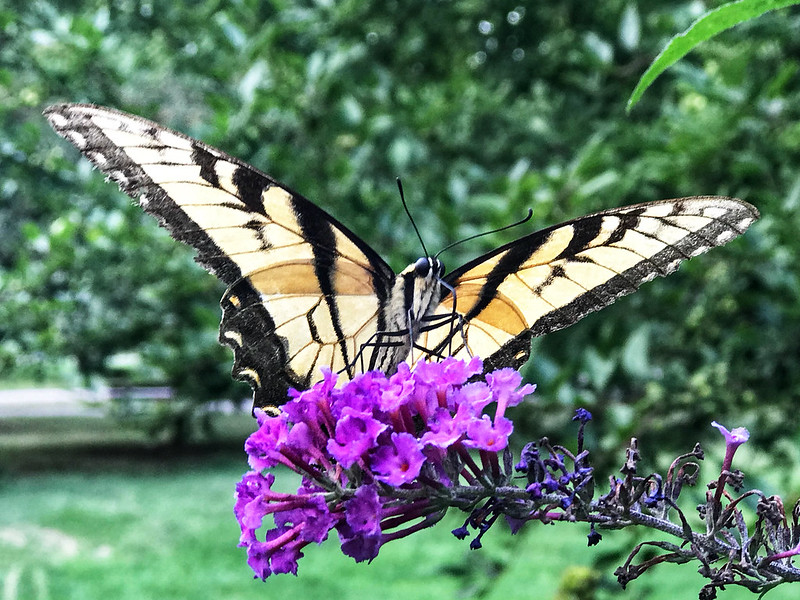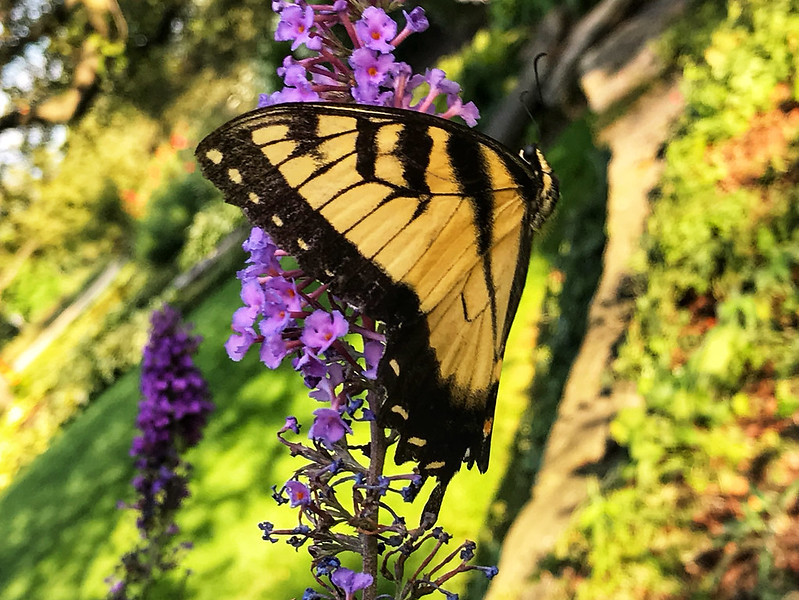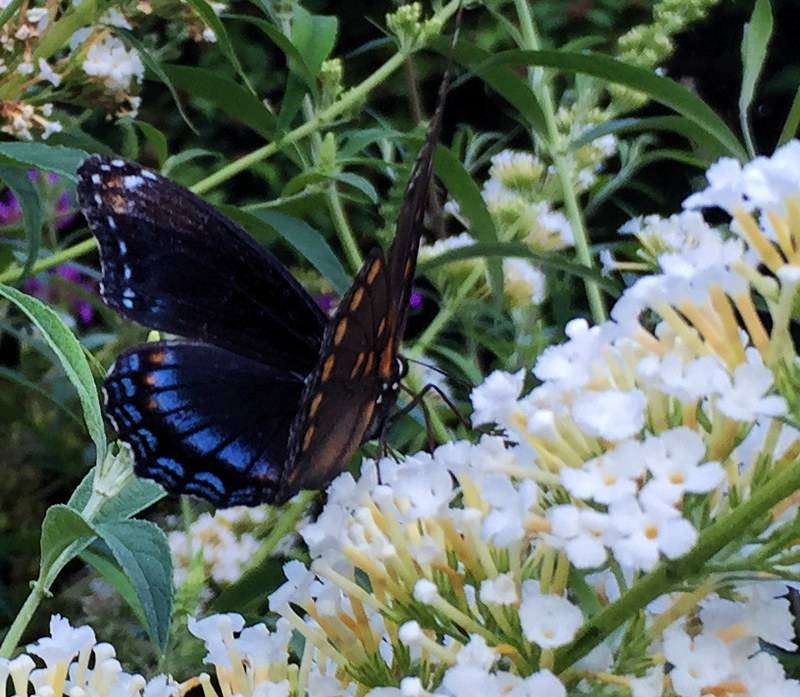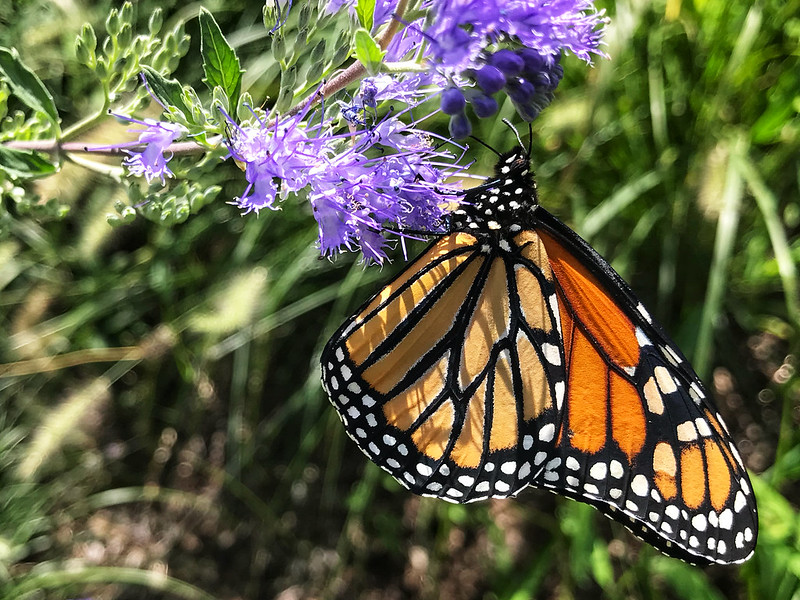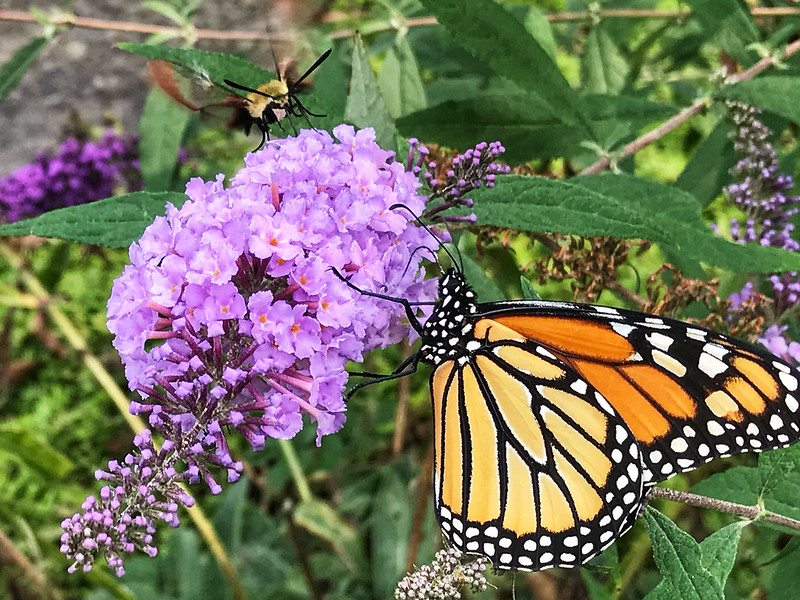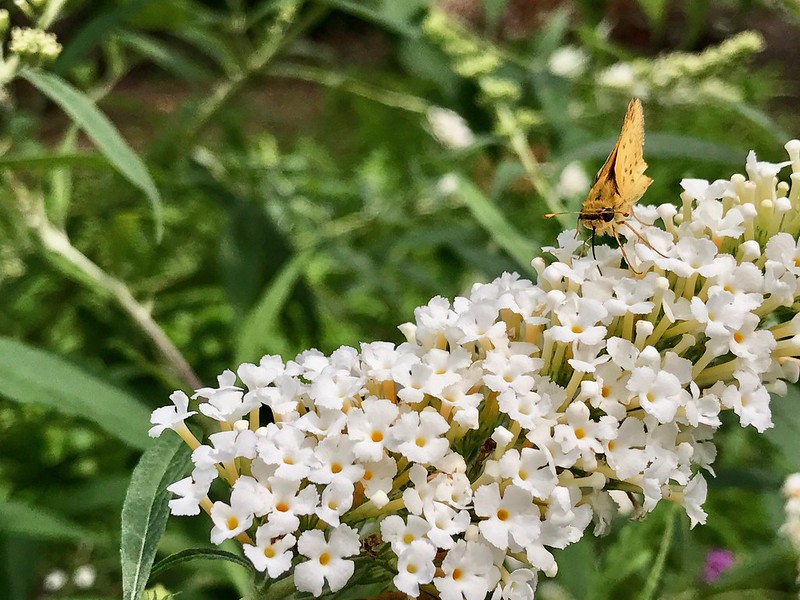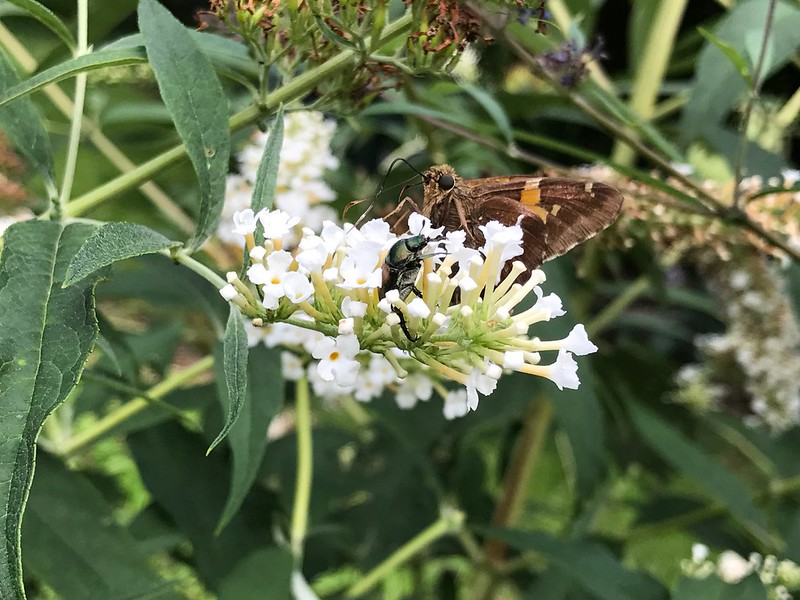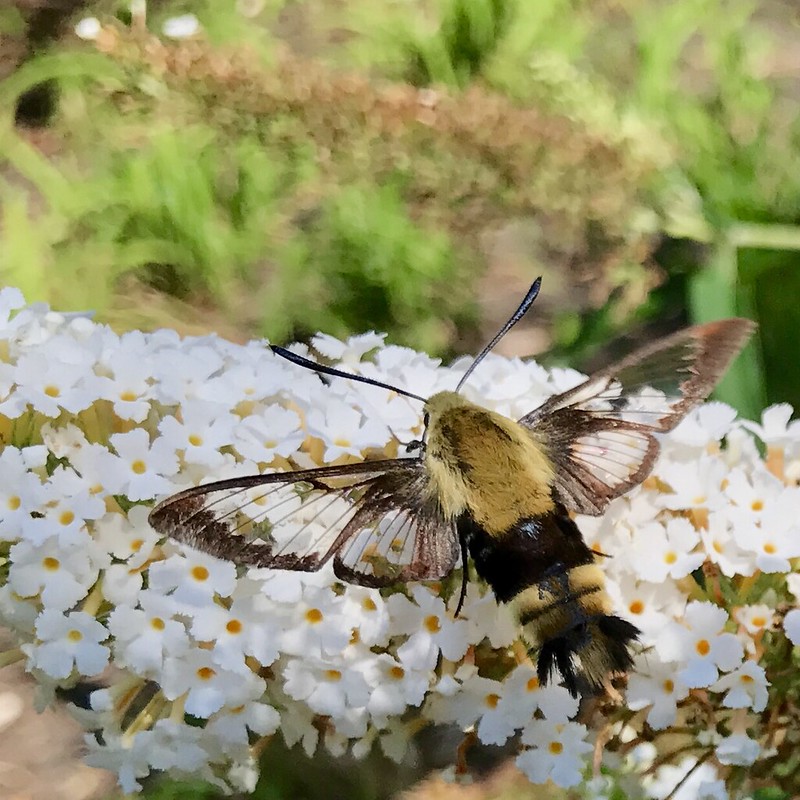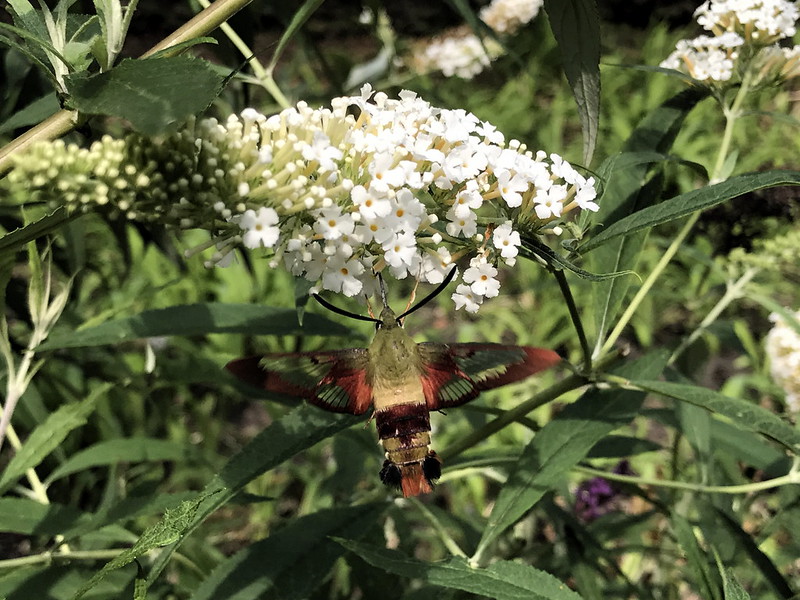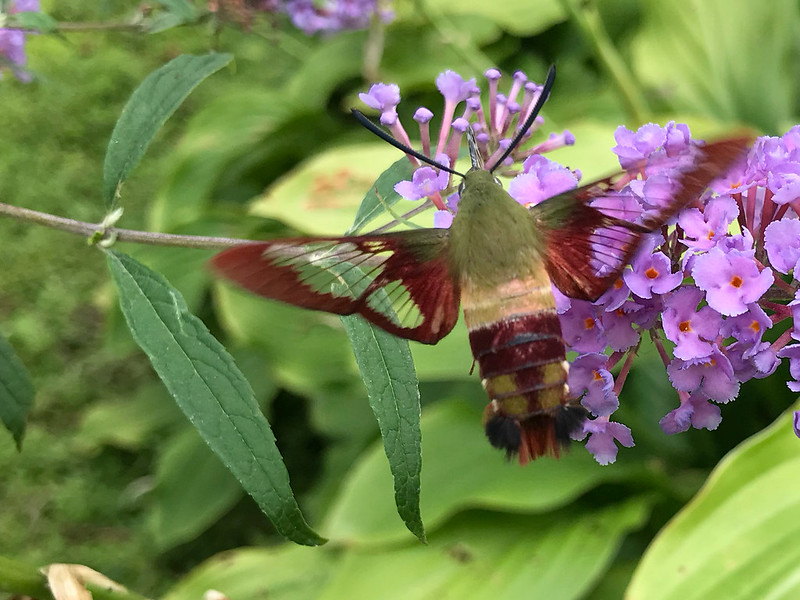At sunset, night pushes day to retreat below the horizon, with one final burst of glorious rays.
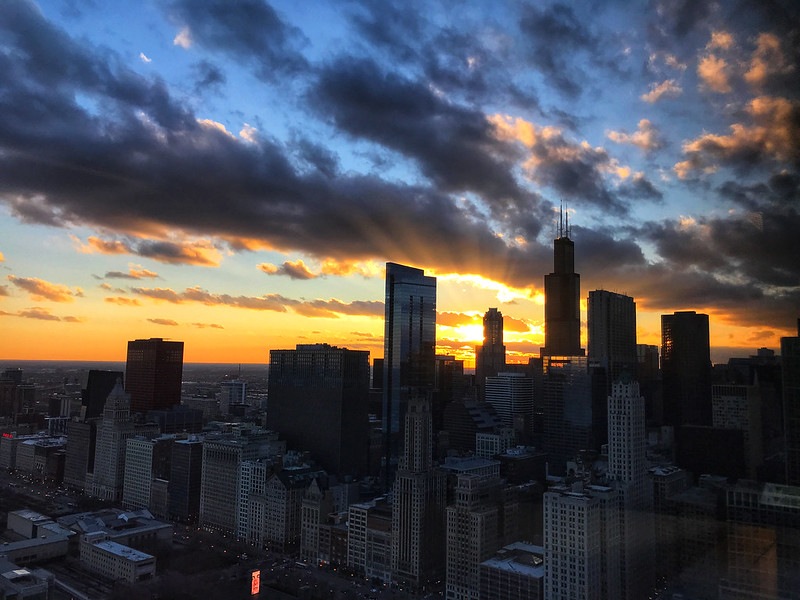

Horseshoe Curve, 10 minutes outside Altoona, Pennsylvania, is a world-famous National Historic Landmark — so the signs say. It’s not on the beaten track.
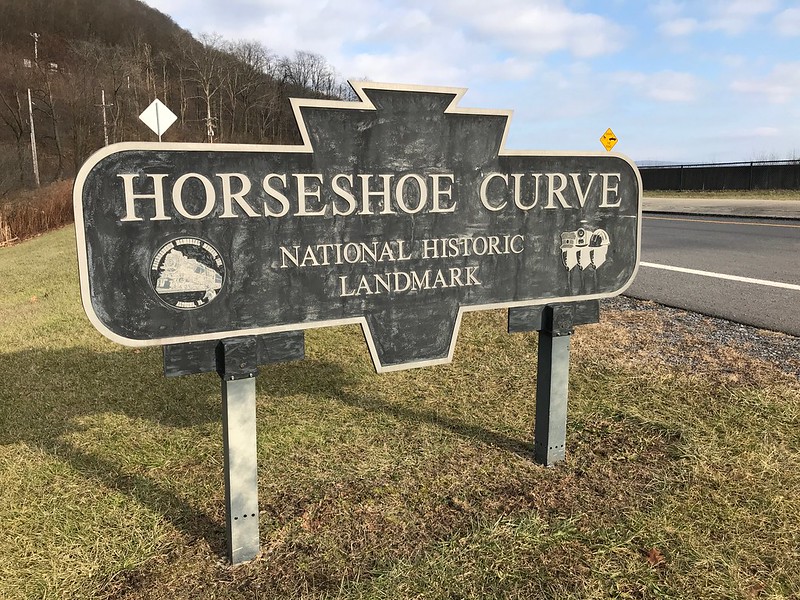
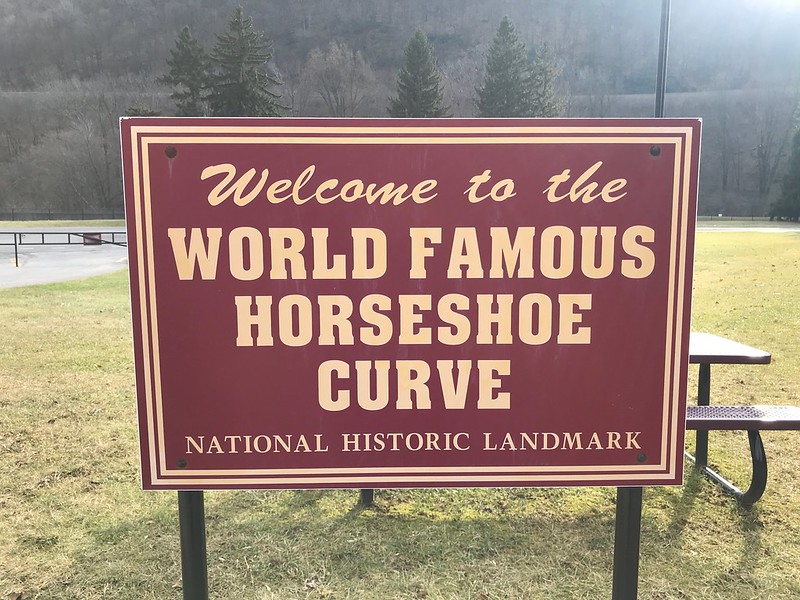
When my family used to visit their families in the Altoona/Bellwood area, sometimes we’d make a side trip to Horseshoe Curve. I still have a souvenir calendar from way back when. Note that it was not “World Famous Horseshoe Curve,” but plain old Horseshoe Curve.
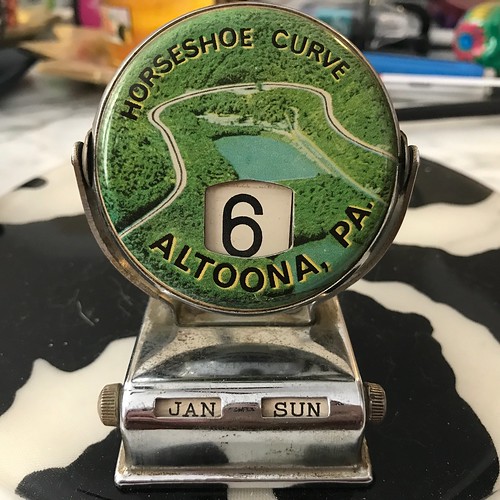
I don’t think we paid admission. My dad wouldn’t have paid, or would have paid only a nominal fee, for something as nonessential as a trip to Horseshoe Curve. I remember only that at some point, I’m not sure when, he commented how “overgrown” it’d become, which made it hard to see much.
In September 1988, after I’d been absent for awhile from Pennsylvania, my aunt took me to see it again. The only way to get up then was steps, difficult for her because she’d lost a kneecap to a car accident. You can see why my dad said you couldn’t see much for the trees and brush.
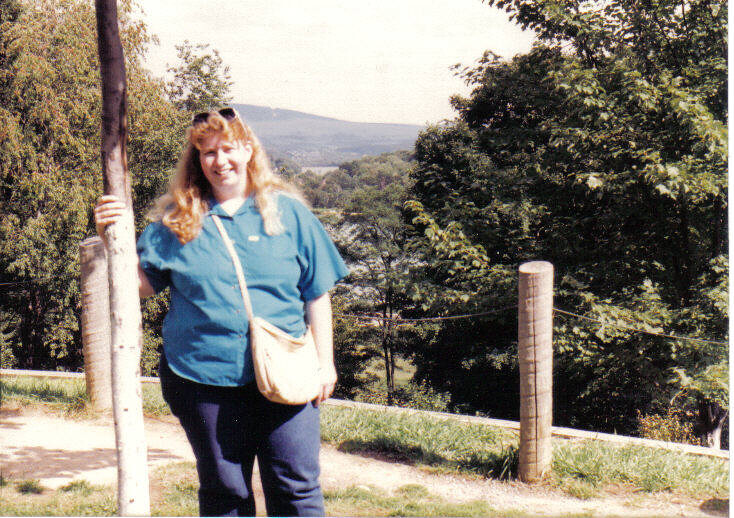
In the early 1990s, a visitor center/museum was built, along with a funicular to get up to the top for those who don’t want to or can’t handle the steps. Now there’s an admission charge to see the Curve, which you can go up to only during the posted season and hours. It’s pricey for a family, and there’s no break for Blair County residents.
I’ve seen Horseshoe Curve as a passenger on Amtrak 42 (eastbound) and 43 (westbound), the Pennsylvanian. On this visit I didn’t, however. A freight train accident with a vehicle ahead of the Capitol Limited had made me miss the connection with the eastbound Pennsylvanian, so I’d had to take Greyhound from Pittsburgh to Altoona. On the way back, the Curve is dark when the Pennsylvanian passes at around 5:30 p.m.
The public can’t access Horseshoe Curve during the colder months. When we made a quick stop the day after Christmas, we just looked up. I’ll have to make a trip sometime in late spring, summer, or early fall for a real visit.
Countless trains have passed downhill toward Altoona and points east since Horseshoe Curve was finished in 1854, engineered by J. Edgar Thompson.
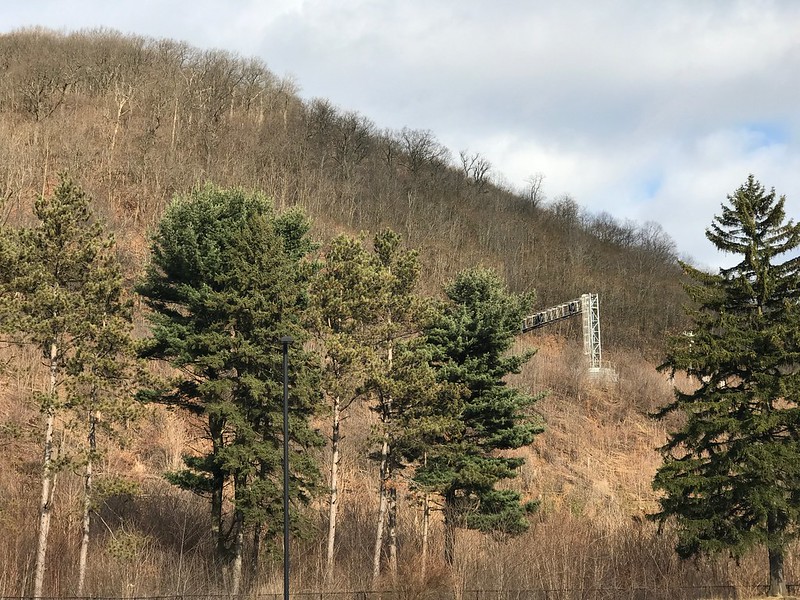
Kittanning Run passes under Horseshoe Curve from the north. It’s too bad there’s not a more bucolic fence to protect the public from falling in.
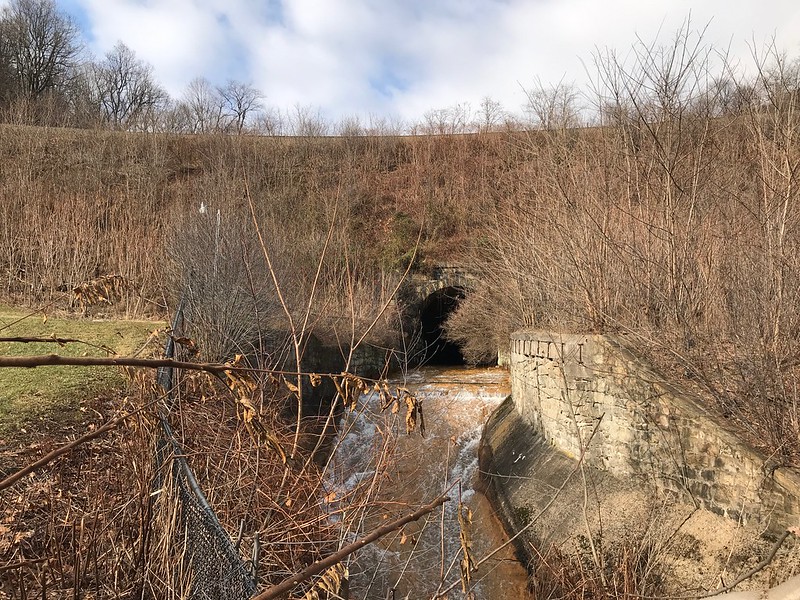
Of course you want to hear that water flowing. The odd thing is . . . I don’t recall anything but the reservoir. You’d think I’d remember hearing or seeing rushing water, but I don’t.
Pushmi-pullyu pairs of black-and-white Norfolk Southern helper engines go back and forth on Horseshoe Curve all day. They’re needed going uphill to pull/push and going downhill to help control speed/brake. You don’t want a long, heavy, fully loaded train speeding downhill around a curve. These two are headed back up the mountain.
It’s Pennsylvania, so you will see coal trains. You can imagine how much they weigh. This one is going downhill east toward Altoona in Logan Valley.
Do you remember “lovely Rita, meter maid”? If your name is Rita, you may never forgive the Beatles. If you remember the Beatles’ heyday, you may recall parking meters.
Once upon a time in Chicago (and today in many suburbs), you put coins into a metal contraption embedded in the sidewalk to pay for parking. The challenge was to have enough quarters and not to over- or underpay. You might have to dash outside in the middle of a restaurant meal or movie to check on the meter or add coins.
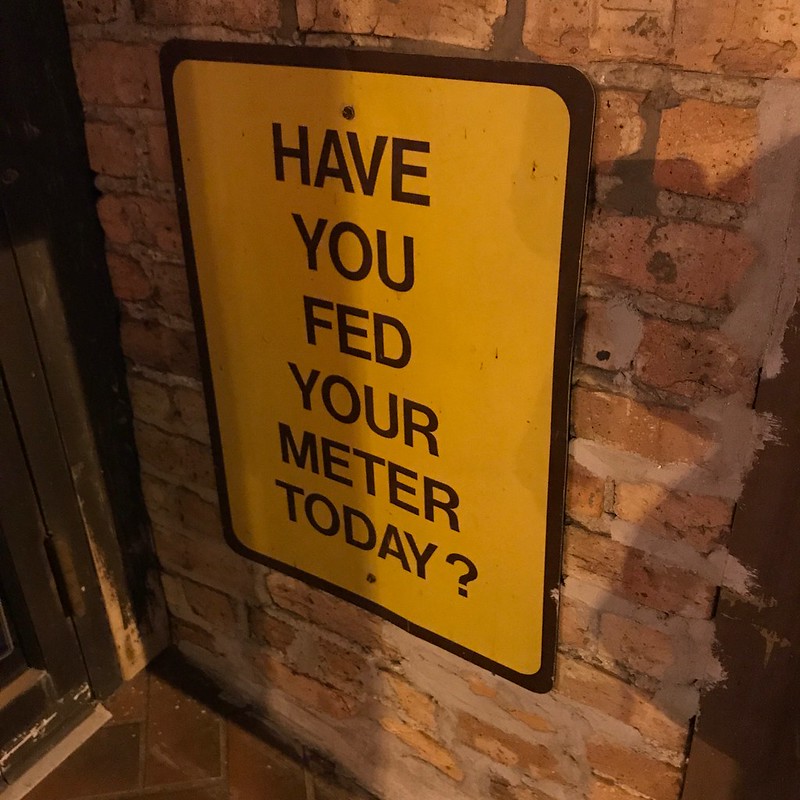
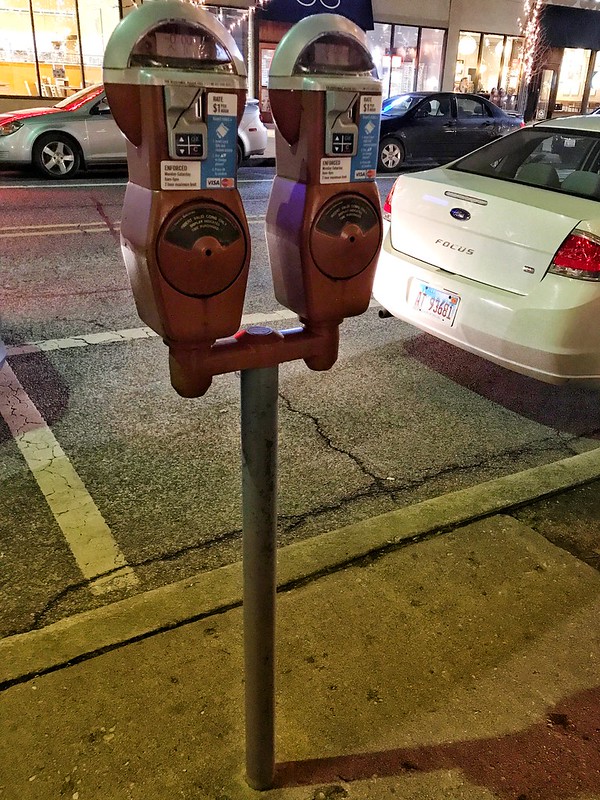
To keep you honest, uniformed “meter maids” patrolled the meters, writing a ticket to place on each car next to a meter with a red “expired” flag. Alternatively, she might listen to your sob story about how you were just leaving, etc.
If you were running a quick errand and were lucky, you might find a meter with time left on it. No matter your financial lot in life, whether rich or poor, finding an unexpired meter made you feel great. You saved a quarter or 50 cents!
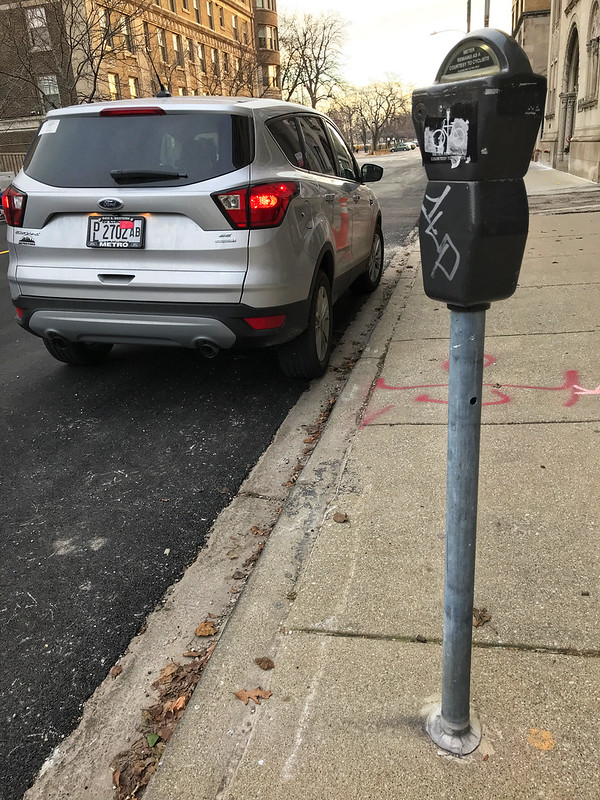
In Chicago, the traditional parking meters by each parking spot are long gone. Instead, you pay at a “pay box” on the block, usually with a credit or debit card.
If you have a smartphone, there’s an app for that. This lets you avoid the walk to the pay box, alerts you when time is almost up, and allows you to add time if needed.
Parking meters are relics, along with the term “meter maid.” “Parking enforcement officer” sounds better, that is, if you’re not parked illegally.
This is the only parking meter left near me, the only one of several that lined the block.
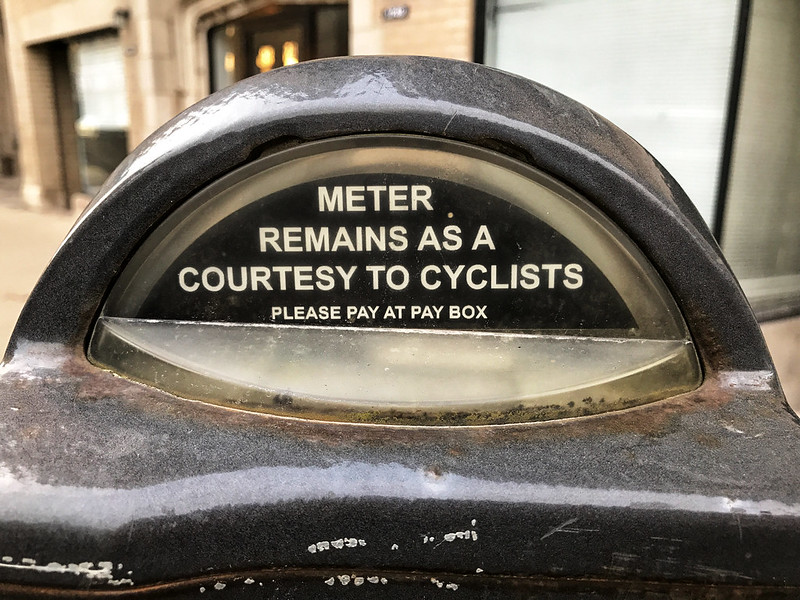
I haven’t seen a cyclist use this parking-meter-turned-bicycle-post. Yet.
Poor scans of photos taken in 1988 remind me of my dad’s move to Pennsylvania. We had visited family there at least once a year during most of my childhood. As my dad got older, my parents and their family members started to have health issues, people died, and I went to college, we stopped going. By the time I returned to the Altoona area, it seemed strange, yet familiar. What felt oddest was getting there mostly by Amtrak vs. wending our way through southern New York and Pennsylvania on Rte. 219. I felt like a stranger in a strange land, with my mother and many of her family already gone.
Since it was one of my first visits in a long time, my dad’s sister took us to several area attractions. I’d never seen Baker Mansion. The kitchen trough for fresh fish fascinated me. I also recall servants’ quarters at the top of the house. I imagined helpless cooks and maids trapped in the attic while fire raged below, the small windows useless for escape.
We also went to an overlook, but I paid little attention to the name (if it was mentioned) or the location. We didn’t have Google Maps in our pockets for reference 30 years ago. I remember only the loveliness of the view — and that when I went to look over, I slid on shale or gravel and tumbled partway down the hill, my fall slowed, then stopped by a tangle of brush. I laughed.
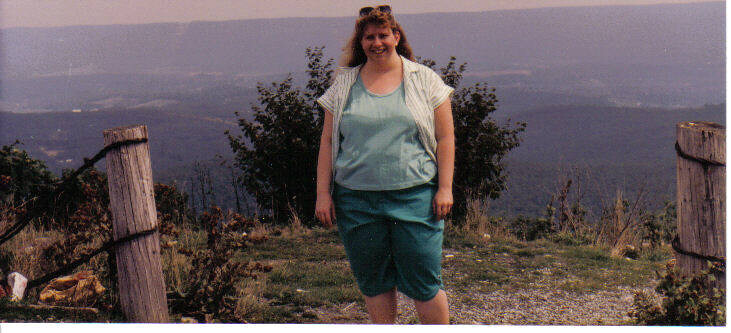
During my Christmas visit in December 2018, I mentioned the photo to my cousin and his wife, who agreed I must be talking about “Wopsy” (Wopsononock Mountain). It’s directly across from Pinecroft.
From the top of Wopsy, we could see the housing development that replaced the woods on their hill, the old landfill, and perhaps a corner of their house or garage. I realized that the towers I see from their road are where we were standing on Wopsy.
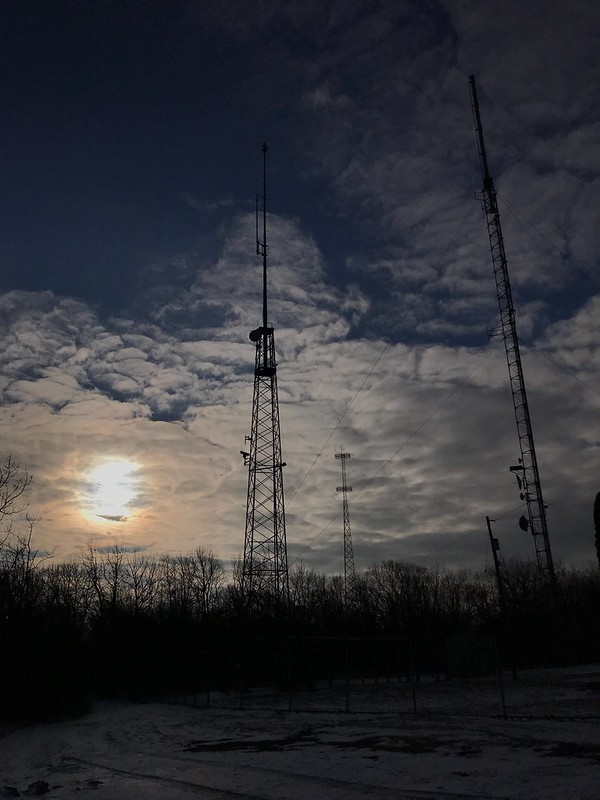
Where once there were wooden fence posts there’s a long, high guardrail covered with grafitti; my cousin feels the area’s not that safe. Devil’s Elbow, which we may or may not have passed, is supposedly haunted by the “White Lady of Wopsononock.” If you don’t believe in the White Lady, you can check out Mindhunter on Netflix about the murder of Betty Jean Shade, whose body was found in an informal trash dump on Wopsy.
What made the death of Betty Jean Shade so different was the violence to her body, and in an effort to determine who killed her, investigators, through the aid of former FBI Agent Dale Frye, who served the Altoona area, turned to the fledgling FBI effort at its Quantico, Va., facility, which was attempting to perfect psychological profiling.
Phil Ray, Altoona Mirror
Betty Jean Shade was found in 1979, nine years before my visit. If I had known that, I don’t think I would have smiled so broadly. But the overlook is still beautiful.
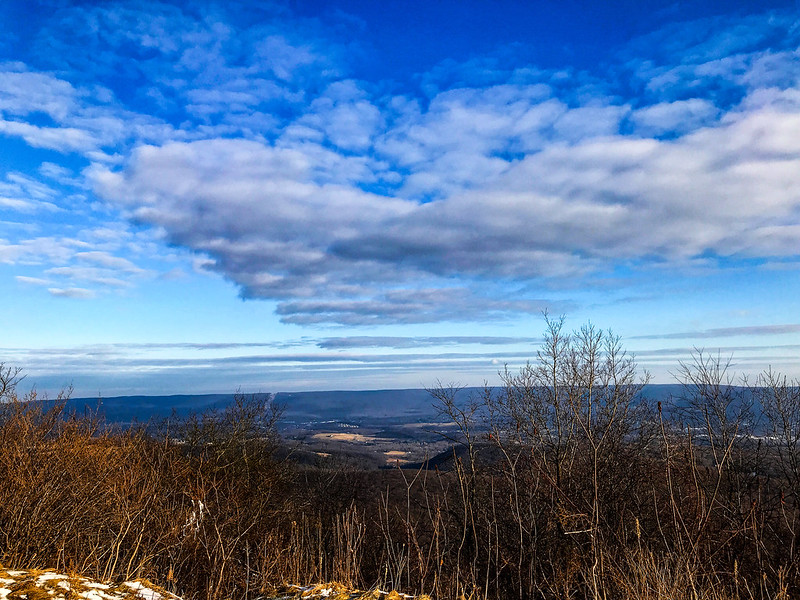
Psychedelic conifers that breathe and sigh — my favorite part of “Illumination” at Morton Arboretum. No sound because this is from a burst of photos — video was too dark.
iPhone photographs of butterflies and clearwings at Perennial Garden, Jackson Park, Chicago, Illinois.
